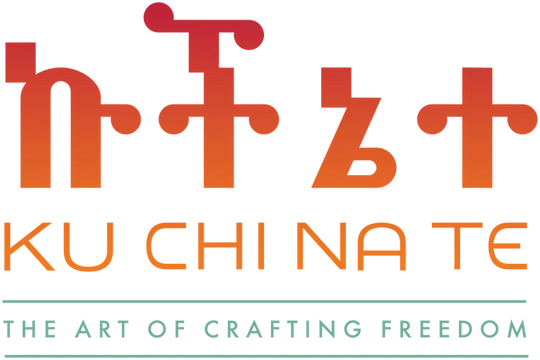The One World | העולם האחד | Le Tout Monde | العالم الواحد
Mabrhit Ghebremariam and Lina Otom Jak Agolon
In this exhibition, curator Sandra Weil, born in the Swedish archipelago and a resident of the one world, creates a unique connection between African-European, and Israeli-Palestinian cultures, focusing mostly on the relations between art and craft that sparked the beginning of early European, Israeli, and Arab modernism.
Lina and Mabrhit are both members of Kuchinate—an arts-based economic and psychosocial collective for African asylum-seeking women. Their work reflects the places and traditions they come from. In time, their memories and knowledge change and the shapes they take reflect contemporary life here and now. For this exhibition, Lina Otom Jak Agolon created a large embroidery representing her home in Tuar in the south of Sudan. The layout is both fantastic and naïve, a mental map of a real place that does not exist anymore. The second work uses similar techniques and materials to create a mask of her grandfather Jak, who served as the head of the village.
For this exhibition, Mabrhit Ghebremariam designed and created “Jugs, Pots and Jars”. This beautiful soft shapes from crochet baskets refer to traditional containers of the local beer—suwa—originating from Tigray. Traditionally, suwa remains locally popular during social events, after (manual) work, and as an incentive for farmers and laborers. In the artists hands memory is shaped out of the materials of the past, transforming the original sharpness of the drink and the glass bottle into amenable materials that still preserve the ceremonial and communal qualities.
This show brings different cultures and religions together to form what Eduardo Glissant calls “an archipelago conversation”. Spanning three continents and three religions, this is a conversation that is “worldly” without being global, it addresses specific localities and artistic traditions, but it does so from multiple perspective erasing the hegemonic borders between first, second, and third world. The notion of “the one world” was coined by Glissant, one of the most important writers and philosophers of our times. Born in Martinique in 1928 and died in Paris in 2011, Glissant sought an alternative to globalization, on the one hand, and nationalism on the other. The one world is everyone’s world—it is a framework for thinking togetherness without sameness, and exchange without dominance. The one world is an archipelago of islands, each distinct and interrelated. The affinities can be sensed, they are aesthetical or pattern-like, and they concern simple and basic matters: creating a home, living with others, and being human.

